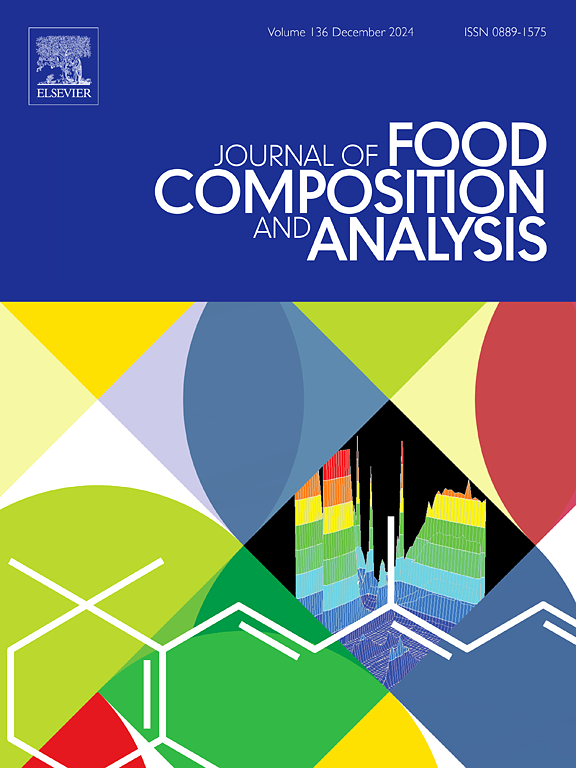High-throughput fluorescent aptasensor for rapid detection of Aflatoxin B1 based on magnetic separation and RCA-ThT
IF 4
2区 农林科学
Q2 CHEMISTRY, APPLIED
引用次数: 0
Abstract
Aflatoxin B1 (AFB1) is a mycotoxin with high carcinogenic potential that can contaminate a wide range of agricultural products, posing a chronic risk to human health. Therefore, the development of rapid and high-throughput AFB1 detection methods is crucial for safeguarding food safety and human health. A high-throughput fluorescent aptasensor based on magnetic beads (MBs) attached to the aptamer (Apt) and rolling circle amplification (RCA) technology conjugated to thioflavin T (ThT) was developed for the detection of AFB1. Using the encoded circular DNA template for the RCA reaction, long single-stranded DNA containing a large number of G-quadruplexes sequences was obtained. A significant enhancement of ThT fluorescence intensity is achieved through the intercalation of a large amount of ThT into G-quadruplexes, which substantially improves the sensitivity of the aptasensor. In addition, the aptasensor uses ThT as a label-free fluorescent signal probe, which saves preparation cost, and achieves high-throughput magnetic separation and rapid detection with the help of a 96-well plate and microplate reader. The limit of detection (LOD) reached 0.02 ng/mL in the conventional fluorescence detection mode and 0.01 ng/mL in the microplate reader mode of detection, and the real samples were spiked in both modes with recoveries ranging from 95.19 % to 110.72 % and 96.35–104.48 %.
求助全文
约1分钟内获得全文
求助全文
来源期刊

Journal of Food Composition and Analysis
工程技术-食品科技
CiteScore
6.20
自引率
11.60%
发文量
601
审稿时长
53 days
期刊介绍:
The Journal of Food Composition and Analysis publishes manuscripts on scientific aspects of data on the chemical composition of human foods, with particular emphasis on actual data on composition of foods; analytical methods; studies on the manipulation, storage, distribution and use of food composition data; and studies on the statistics, use and distribution of such data and data systems. The Journal''s basis is nutrient composition, with increasing emphasis on bioactive non-nutrient and anti-nutrient components. Papers must provide sufficient description of the food samples, analytical methods, quality control procedures and statistical treatments of the data to permit the end users of the food composition data to evaluate the appropriateness of such data in their projects.
The Journal does not publish papers on: microbiological compounds; sensory quality; aromatics/volatiles in food and wine; essential oils; organoleptic characteristics of food; physical properties; or clinical papers and pharmacology-related papers.
 求助内容:
求助内容: 应助结果提醒方式:
应助结果提醒方式:


